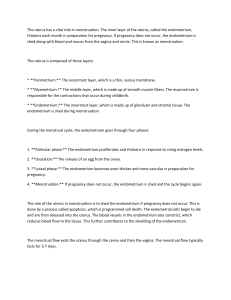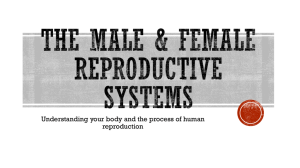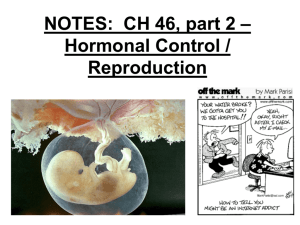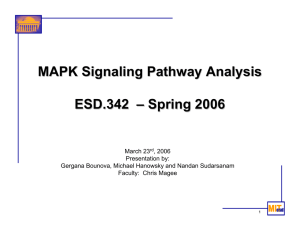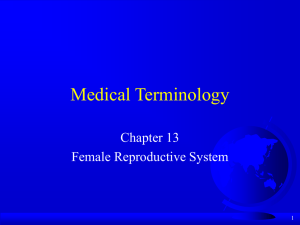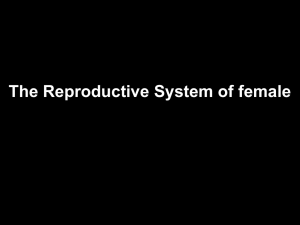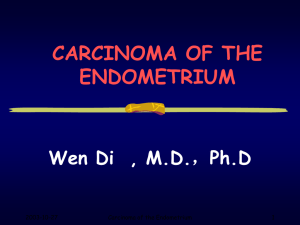Membrane-Initiated Estrogen Signaling in the Ovine Endometrium Brian Kitamura
advertisement
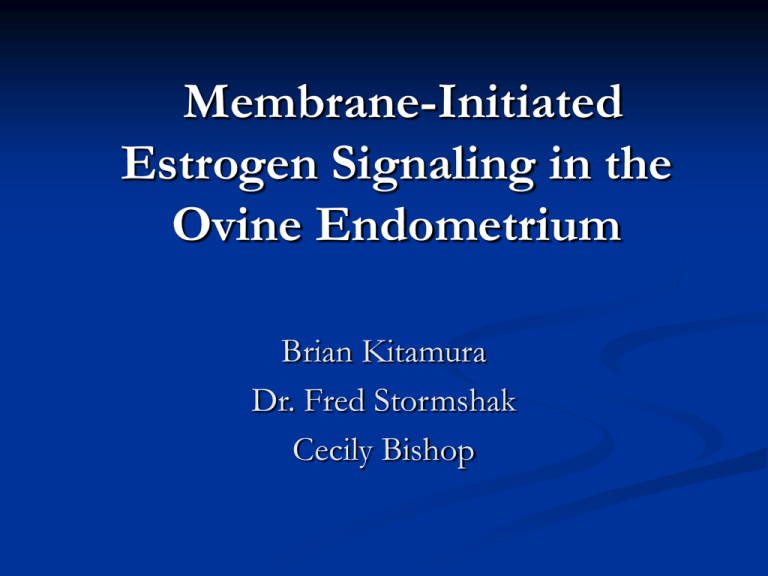
Membrane-Initiated Estrogen Signaling in the Ovine Endometrium Brian Kitamura Dr. Fred Stormshak Cecily Bishop Relevance Economic Impact Implications for reproduction in litter bearing species Conceptus implantation/attachment Human Health Breast cancer/uterine cancer Hypothesized to cause cells to multiply Fast acting estrogen effects for vasodilation Rationale Classical Method of Steroid Action HSP90 SR S 1 4 3 5 2 SBP Nucleus S 6 mRNA 7 Protein Rationale Previous Observations In vitro studies High affinity Estradiol (E2) binding sites in plasma membrane of Chinese Hamster Ovary cells (Razandi et al.) Rapid activation of MAPK pathway by E2 (Song et al.) In vivo studies Winter 2004-2005 High affinity E2 binding sites in ovine endometrium KD = 2.13 x 10-13 M Objectives of Research E2 effect on the MAPK Pathway has been studied in in vitro studies Is there physiological significance in the animal model? Examine the effect of E2 on the MAPK pathway in vivo Methods Ovariectomized subjects Tissue samples from ovine endometrium Endometrium is highly responsive to E2 Hormone treated to mimic estrous cycle General anesthetic Uterus exposed via midventral laparotomy Methods (interior tissue of the uterus known as the endometrium) Figure courtesy of P.L. Senger, Pathways to Pregnancy and Parturition, First Revised edition, 1999 Uterus opened to reveal endometrium First tissue sample taken 5 micrograms E2 injected via uterine artery Tissue collected at 5, 10, 15 and 30 minutes post injection of E2 Tissue frozen at -80 C Returned to laboratory Methods Time Scheme Hormone Schedule Days 1-2 E2 Given Days 8-9 Days 3-7 P4 Given E2 Given Day 10 Day 11 Rest Surgery Experiment Timeline 0 min 5 min 10min First Sample Taken, E2 Injected Samples Taken 15 min 30 min Final Sample Taken Methods Our Hypothesis picture courtesy of http://www.biocarta.com/pathfiles/h_erkPathway.asp Methods Testing the Hypothesis Tissue homogenized and separated into nuclear and cytosolic portions Proteins separated via western blot Probed for presence of phosphorylated ERK1/ERK2 Methods Testing the Hypothesis picture courtesy of http://www.biocarta.com/pathfiles/h_erkPathway.asp Results Presence of Phosphorylated ERK1/2 Minutes: 0 5 10 15 30 5 7.36 45.5 26.67 8.75 3 9.45 39.67 27.33 10 Relative Intensity: Conclusion Exogenous estrogen acts via a membrane generated signal to stimulate the MAPK pathway in the ovine endometrium Acknowledgements Howard Hughes Medical Intership Undergraduate Research, Innovation, Scholarship, and Creativity (URISC) Department of Animal Sciences, College of Agriculture Stormshak Lab Thank You!
